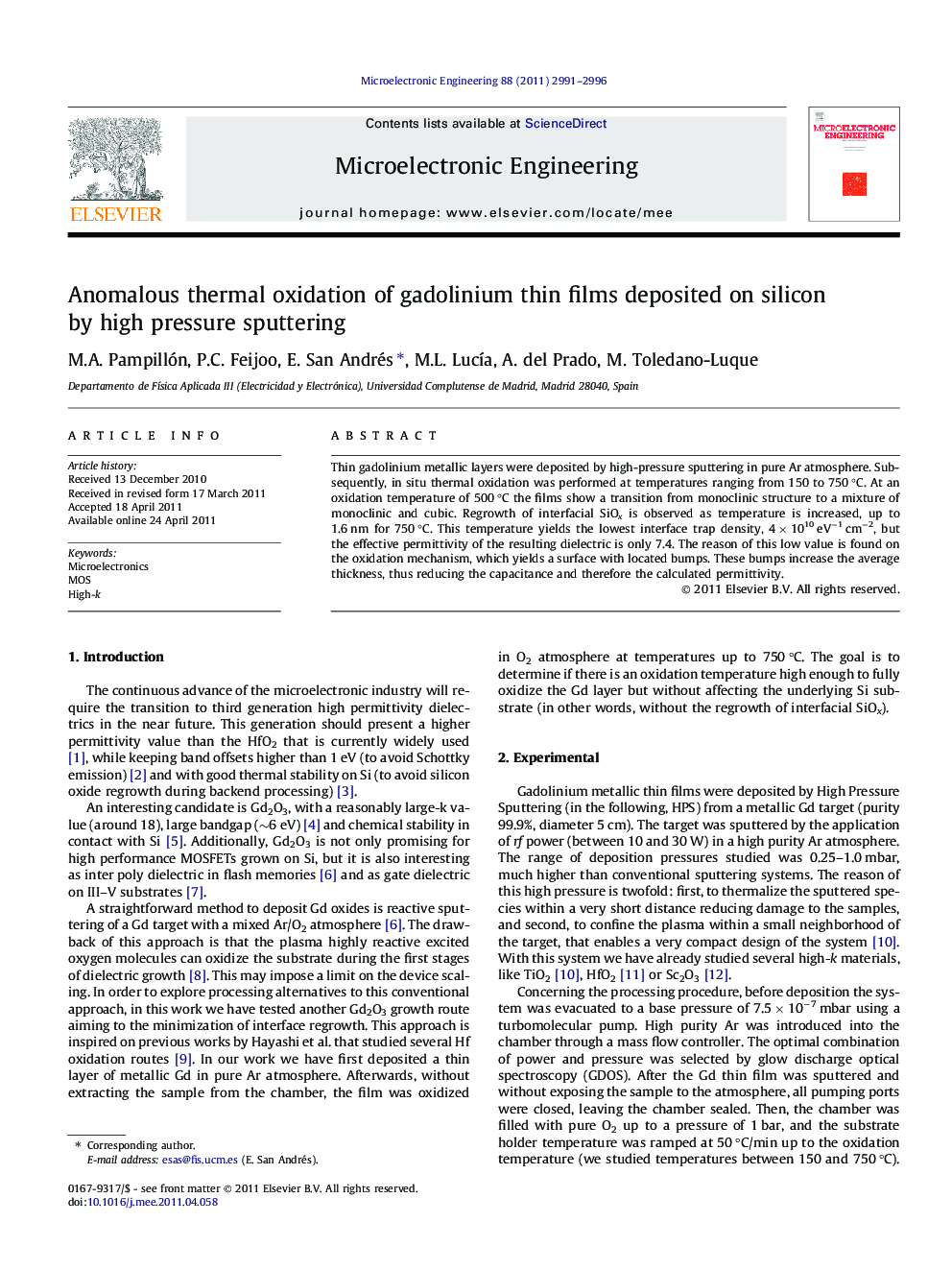| Article ID | Journal | Published Year | Pages | File Type |
|---|---|---|---|---|
| 539675 | Microelectronic Engineering | 2011 | 6 Pages |
Thin gadolinium metallic layers were deposited by high-pressure sputtering in pure Ar atmosphere. Subsequently, in situ thermal oxidation was performed at temperatures ranging from 150 to 750 °C. At an oxidation temperature of 500 °C the films show a transition from monoclinic structure to a mixture of monoclinic and cubic. Regrowth of interfacial SiOx is observed as temperature is increased, up to 1.6 nm for 750 °C. This temperature yields the lowest interface trap density, 4 × 1010 eV−1 cm−2, but the effective permittivity of the resulting dielectric is only 7.4. The reason of this low value is found on the oxidation mechanism, which yields a surface with located bumps. These bumps increase the average thickness, thus reducing the capacitance and therefore the calculated permittivity.
Graphical abstractFigure optionsDownload full-size imageDownload as PowerPoint slide
